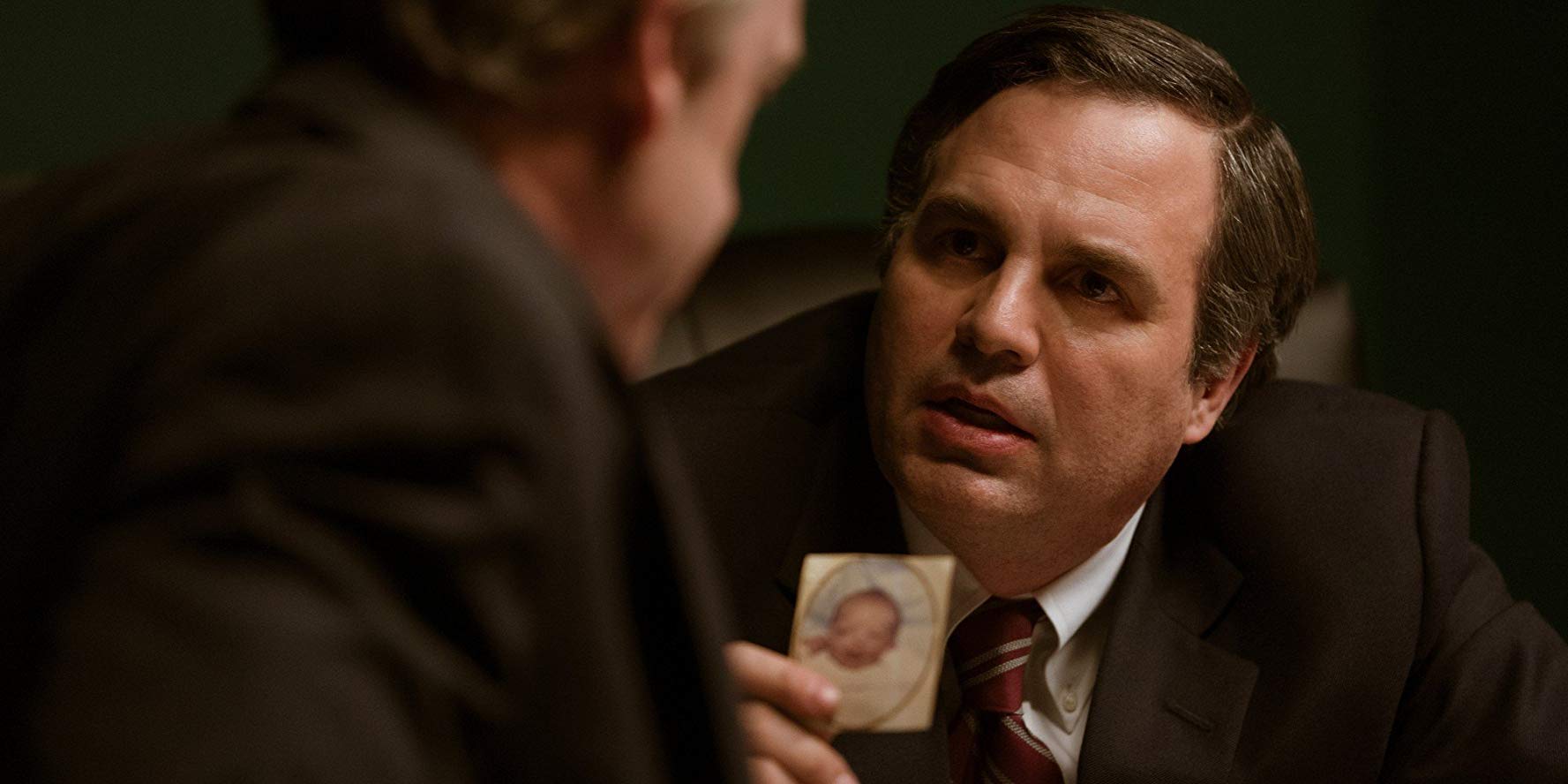
by Michael Foust | Dec 6, 2019
Robert Bilott is a smart and hard-working corporate defense
attorney who represents some of the nation’s most powerful chemical companies.
He opposes red tape and regulation. He sides with the big
businesses. And when the chemical companies throw a party, he rubs shoulders
with the execs.
But then a family friend—a West Virginia farmer named Wilbur
Tennant—pays him a visit. Bilott claims the nearby DuPont factory is pouring
deadly chemicals into the streams and killing his cows—190 so far. Tennant wants
to hire a local attorney, but no one will accept his case. They’re afraid to
take on the town’s largest employer.
Bilott begrudgingly agrees to help—believing DuPont’s own records
will clear the company—yet is shocked at what he discovers. The company, he
says, has been hiding data from the public and its workers about the dangers of
a chemical used to make Teflon pans. Even worse: This chemical, known as C-8
(or PFOA), could be the cause of countless cases of cancer not just in cows but
in humans—as well as fetal deformities (babies born with only one nostril) and
deaths.
“DuPont knew everything,” he tells his wife. “They knew that
the C-8 they put into the air, buried in the ground for decades was causing
cancers… They did nothing.”
Bilott wants to take DuPont to court. Will he succeed?
The drama Dark Waters
(PG-13) expands nationwide this weekend, starring Mark Ruffalo (Hulk in the
Marvel films) as Bilott; Anne Hathaway (Les
Miserables) as his wife, Sarah; and Bill Camp (12 Years a Slave) as Tennant.
It is based on a true story, as well as on the 2016 New York Times Magazine feature “The
Lawyer Who Became DuPont’s Worst Nightmare.” DuPont settled the case with
Tennant. But Bilott then filed a class-action lawsuit that resulted in a $670
million settlement with 3,550 residents. C-8— which DuPont stopped using—was
linked to six illnesses, including two types of cancer.
Dark Waters is a gripping (and somewhat coarse)
legal drama with real-world implications. It raises worldview issues while
challenging knee-jerk reactions in the political realm. It also shows how one
man can change society for the better.
Warning:
minor/moderate spoilers!
(Scale key:
none, minimal, moderate, extreme)
Violence/Disturbing
Minimal. A cow that had gone mad due to ingesting chemicals
is shot and killed off-camera.
Sexuality/Sensuality/Nudity
Minimal/moderate. The film’s opening moments includes a
skinny-dipping scene at night, briefly shows us two backsides in the dim
moonlight. Officials quickly chase the man and woman off. The scene’s intent is
to show us the danger of the chemicals—swimming in the water is dangerous,
after all—but could have been just as effective with swimsuits.
Coarse
Language
Moderate: H-ll (8), misuse of “Jesus” (8), d–n (4), GD (3),
a– (3), misuse of “God” (3), f-word (2), SOB (2), OMG (1), s–t (1).
Other
Positive Elements
We see Tennant attend church, and then Bilott and his family
in church, too. Bilott’s wife prays over the family dinner. When Bilott grows
discouraged about Tennant’s case, his wife says, “You did the Christian thing.
You helped him.”
Life Lessons
Standing for
what’s right has a cost: Tennant and Bilott each were ostracized by their
communities. Additionally, Bilott experienced health problems due to stress.
One man can
make a difference:
In this case, two people—Tennant and Bilott—sparked the case that led to major
change.
Change isn’t
easy:
The film shows Bilott combing through thousands of DuPont documents, searching
for the truth.
Worldview/Application
Scripture teaches that humans have dominion over the Earth
(Gen. 1:26-28; Ps. 8:6-8) and are to be responsible caretakers. The Hebrew
people, after all, were commanded to be good stewards of the land (Ex.
23:10-11; Lev. 25:1-7). The same principle applies to us.
Still, few issues within Christianity today are as
controversial as environmentalism. Too often, our politics drives our theology.
Perhaps Dark Waters
gives us a chance for common ground. Can we agree that deadly chemicals should
not be released into the air and water? Can we agree that the public deserves
drinking water that is clean? Can we agree that workers shouldn’t be forked to
choose between unemployment and a job that might give them cancer? Can we agree
that companies shouldn’t risk the public’s safety in order to make a profit?
Dark Waters challenges our beliefs about
government regulation. Self-regulation works perfectly in a society without
sin. Unfortunately, that’s not our world. In our world, executives sometimes
make decisions driven by the bottom line and not the public good. Sometimes,
those decisions poison the water and risk cancer.
Yet even then, both the company and the EPA can have faults. In Dark
Waters, change occurred only because of the tireless work of one man.
Final
Verdict
Dark Waters, like any other movie based on real
events, leaves us wondering: Is that how it really happened? A simple Google
search, though, underscores the movie’s core facts.
It’s a gripping movie, even if it has too much language to
place it in the kid-friendly realm.
Discussion
Questions
1. Should the government have a role in environmental
regulation? Explain your answer.
2. What is a biblical view of environmentalism?
3. Does either political party have the correct view of
business? Of environmentalism?
Entertainment rating: 4 out of 5
stars. Family-friendly rating: 3 out
of 5 stars.
Rated PG-13 for thematic content, some disturbing images and strong language.
PHOTO CREDIT: Focus Features
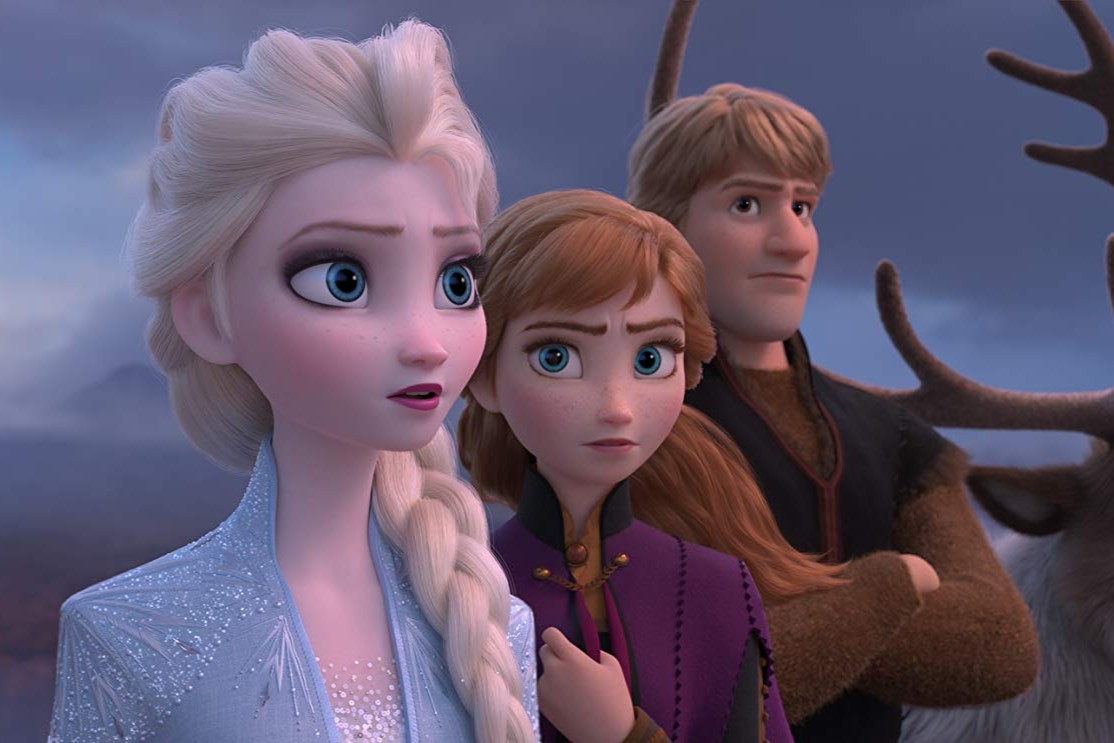
by Michael Foust | Nov 22, 2019
The Disney musical ‘Frozen 2’opens this weekend, continuing the story of a magical queen who has the power to create ice.
Elsa is the young magical queen of a peaceful kingdom,
Arendelle, where no one is lacking and where everyone seemingly is happy.
It’s such a perfect kingdom, in fact, that few people care
to venture far outside its borders.
Elsa, though, is no ordinary person. She can create an ice
palace with a simple twist of her hands. She can start a snowstorm with a snap
of a finger. She can repel an army while sitting down. She has powers that her
sister, Anna, never had.
Not surprisingly, Elsa begins to wonder: Why was she born
with these powers?
Then she remembers a story her father told about an
enchanted forest to the north protected by the spirits of air, fire, water and
earth. Unfortunately, though, a mysterious mist now covers that forest,
preventing anyone from getting in—or out.
But now Elsa is hearing a siren’s voice from the forest. It
calls to her during the evening. It wakes her up at night. Perhaps—just perhaps—this voice holds a clue to
her past. Then again, maybe that voice is setting a trap to harm her.
The Disney musical Frozen
2 (PG) opens this weekend, starring Idina Menzel (Ralph Breaks the Internet) as Elsa, Kristen Bell (The Good Place) as Anna, Josh Gad (Beauty and the Beast, 2017) as Olaf the
snowman, and Jonathan Groff (The
Conspirator) as Kristoff. All four voices were in 2013’s Frozen.
In Frozen 2, Elsa
tries communicating with the siren but accidentally wakes the forest’s spirits—sparking
a series of natural disasters in Arendelle that force the citizens to evacuate.
Elsa then joins Anna, Kristoff and Olaf in a journey to the forest in hopes of
reversing the damage to Arendelle—and perhaps finding answers for Elsa.
Frozen 2 includes the same type of magic in
the first film—a topic that divided Christian families in 2013—and introduces
animism, too. (Details below.)
In addition, Frozen 2
simply doesn’t have the, well, magic
of the first film. The plot isn’t as fun and simple. The music is good, but not
as memorable.
Even so, it does have plenty of laughs and emotion-laden
moments—just like its predecessor.
Warning:
minor/moderate spoilers!
(Scale key:
none, minimal, moderate, extreme)
Violence/Disturbing
Minimal. We see a flashback to a battle with swords. (It’s
bloodless.) Characters run away from a fire (it’s really a “fire spirit”) in
the forest. “Earth Giants”—rock-like monsters bigger than hills—roam through
the woods at night. Later, during the daytime, Anna and Olaf canoe down a river
past the Earth Giants. Elsa and Anna get separated. It’s learned that one of
their relatives killed someone.
Sexuality/Sensuality/Nudity
Minimal. The Kristoff-Anna romance includes a couple of
short kisses on the lips. Olaf jokes that he finds clothes “restricting.”
Coarse
Language
None. (Although we do hear a “butts” and an unfinished “what
the ….”)
Other
Positive Elements
The sibling love between Elsa and Anna can be a model for
movie-going brothers and sisters.
Other Stuff
You Might Want To Know
We see a flashback to Elsa making ice sculptures as a young
girl. Trolls come out of the forest; they say of Elsa’s powers: “We must pray
they are enough” to save the kingdom.
Life Lessons
Life is all
about change: But
as Anna and Olaf learn, some things are priceless and even permanent.
Everyone
needs encouraged: Elsa
has constant doubts, but Anna encourages her: “When will you start seeing
yourself like I see you?”
Self-sacrifice
is a virtue: Both
Elsa and Anna put their lives on the line for the betterment of each other and
the kingdom.
Wrongs need
to be righted: It’s
at the heart of the plot. Still, we must ask: Is there a statute of limitations
on such a belief?
Worldview/Application
Frozen 2 will divide Christian families.
Some will see it as innocent fun that even can be used to educate children
about unbiblical worldviews. Others will point to the film’s animism and plot
and choose to sit this one out.
More than likely, families who enjoyed Frozen, Moana and Coco will
enjoy Frozen 2.
For parents who want to explore the worldview, here’s what
you need to know about the movie’s animism: We meet a heroic people of the
forest who “only trust” nature. We hear that water is a living organism that
has a “memory.” We learn that the spirits of air, fire, water and earth are the
“most powerful” spirits on the planet. We also learn of a “fifth” spirit that
is a bridge between people “and the magic of nature.” Additionally, Elsa
mentions how she’s seen her “power grow.”
The movie, like its predecessor, gives us a good example of
sibling love. It also introduces a major ethical question: Does every “wrong”
need to be “righted”?
Sponsors
Ziploc, Google Home, JC Penney, Nature’s Own, Kellogg’s,
General Mills, Enterprise, Juicy Juice, McDonald’s, Icebreakers and Glade.
Discussion
Questions
1. What can Frozen 2
teach us about the relationship between siblings?
2. If you could explore deep into your past and uncover
family secrets, would you?
3. Should every “wrong” in history be “righted”? Are there
limits?
4. Name three positive character traits of Elsa—and then of
Anna.
Entertainment rating: 3 out of 5
stars. Family-friendly rating: 4 out
of 5 stars.
Frozen 2 is rated PG for action/peril and some thematic elements.
Photo credit: Disney
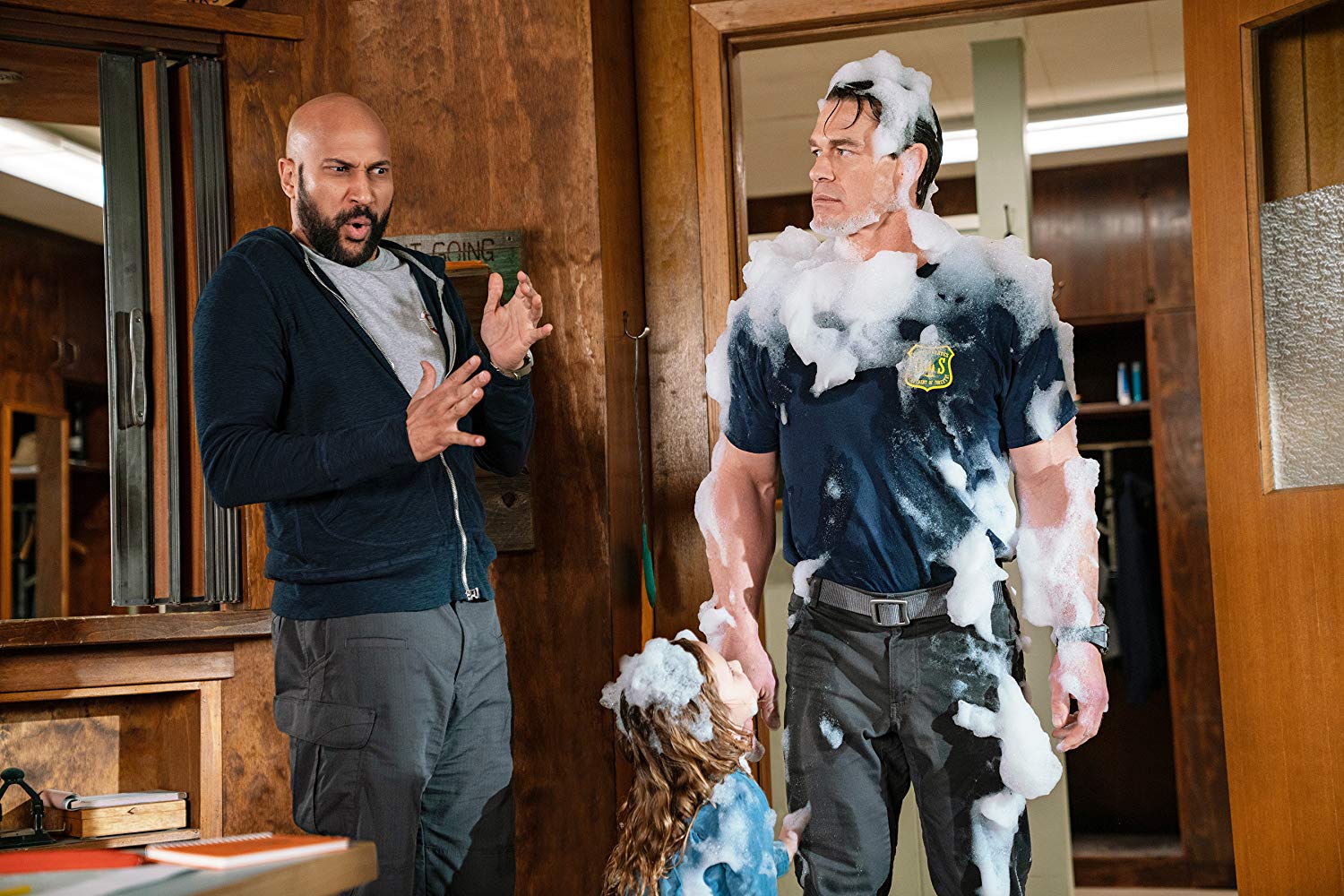
by Michael Foust | Nov 22, 2019
‘Playing with Fire’is a slapstick comedy that most children (and even parents) will love.
Jake Carson is a straight-laced superintendent of a group of
smokejumpers—elite firefighters who parachute into wildfires to rescue the
stranded and save houses from destruction.
He’s never met a joke he thought was funny. He’s also never
met a child he thought was cute.
For the single Carson, the meaning of life is smokejumping
and climbing the career ladder. Dating is a waste of time. So are
children.
But then Carson and his crew rescue three kids from a cabin
in the middle of the forest.
Their parents are away for the night, which means they’ll
have to eat dinner and sleep back at the fire station.
Carson quickly sets the ground rules: “This depot is not a
playground.”
Unfortunately for Carson, these kids aren’t the
sit-down-and-be-quiet type. One is an energetic little girl. The other is a
curious get-into-everything boy. And the third is a wise-cracking
teenager.
Can Carson survive the night? Or will these three children
teach him how to laugh—and perhaps even how to love?
Now in theaters, the children’s comedy Playing with Fire (PG) stars pro wrestler John Cena (Ferdinand) as Carson; Keegan-Michael Key (The Lion King, 2019) as Mark, a smokejumper; John Leguizamo (Ice Age series) as Rodrigo, another smokejumper; and Judy Greer (Ant-Man) as Carson’s romantic interest, Amy Hicks.
Playing with
Fire is
a slapstick comedy film in the same genre as Home Alone and Peter Rabbit—but
with far less violence. And unlike Home
Alone, it contains no coarse language. Most kids will love it.
Thankfully, it’s also a movie that outperforms its trailer.
It contains plenty of laughs for mom and dad. Even better, it has a
family-centric plot—and a great foster care angle.
Key and Rodrigo are the funniest, but Cena provides a few
chuckles, too.
Along the way, moviegoers learn about smokejumpers. (Such
as: Did you know there are only about 330 of them in the U.S.?)
Warning:
minor/moderate spoilers!
(Scale key:
none, minimal, moderate, extreme)
Violence/Disturbing
Minimal. Children are trapped in a cabin that’s on fire.
(They’re quickly rescued.) A laughing toddler grabs a nail gun and starts
shooting it at a man. (It’s played for laughs.) An automobile, driven by a teen
girl, nearly falls off the side of a cliff. (She and the passengers are
rescued.)
Sexuality/Sensuality/Nudity
Minimal. A married woman jokes about Carson being
attractive. (“My husband sells insurance,” she says. “Take me with you.”) The
muscular Carson (Cena) is seen two or three times without his shirt. (He
quickly puts a shirt on each time.) A man is called a “stud.” The children
arrange for Carson and Hicks to have a date. (The movie ends with a kiss and
them marrying.)
Coarse
Language
None.
Other
Positive Elements
Even though the film is a comedy, we see the heroics of
smokejumpers on display.
Other Stuff
You Might Want To Know
We see a bottle of alcohol. A few of the men drink the
alcohol in small kiddie cups. (It becomes a running joke.) But they don’t
become drunk. We learn that some of the characters (including Carson) lost
their parents at a young age. We see a wine bottle emoji.
Life Lessons
Work isn’t
the meaning of life: At one point, Carson asks, rhetorically, “Without this job,
who am I?” Eventually, he learns that friends and family are more important.
The world
needs first responders: As long as we’re building civilizations near forests, we
need heroes like Carson and his men.
Children are
a blessing: It
takes a while, but Cena finally discovers this.
Worldview/Application
Playing with
Fire
was produced in partnership with Nickelodeon Movies—a company known more for
goofiness than emotional-laden stories.
This film, though, hits the bullseye on a few key messages.
Like the priority of family. And the blessings of childrearing. And the
importance of a mom and a dad.
It’s not a classic like Home
Alone, but thanks to a family-friendly script—it’s clean enough for all of
my young children—it may be worth a trip to the theater.
Final
Verdict
Most critics are panning this film, but I suspect they
didn’t watch it with a kid. Maybe they’re just like Carson—and need to loosen
up.
The humor is truly funny, and its stays in appropriate
territory. I enjoyed it.
Discussion
Questions
1. Do you know of any first responders who deserve your
prayer and thanks?
2. What is the film’s message about children? About foster
care?
3. Did Carson have the wrong view of life and work? Why or
why not?
4. What caused Carson to change his mind about the children?
Entertainment rating: 4 out of 5
stars. Family-friendly rating: 4.5
out of 5 stars.
Playing With
Fire is rated PG for rude humor, some suggestive material and mild peril.
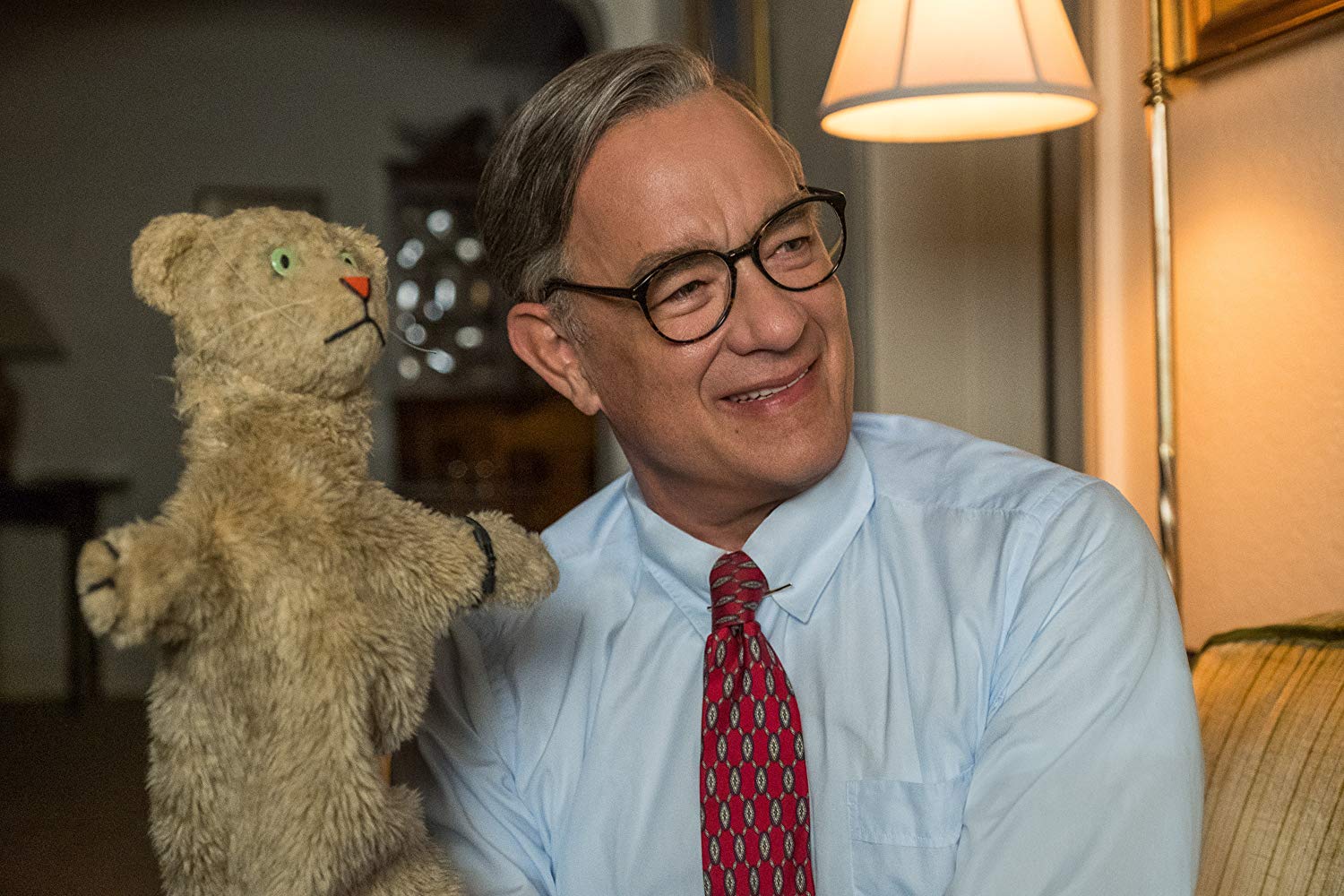
by Michael Foust | Nov 15, 2019
The film ‘A Beautiful Day in the Neighborhood’ opens next week, telling the story of a journalist whose life is changed after meeting Mister Rogers.
Lloyd Vogel is a tenacious reporter for Esquire who always
tackles the big stories—and if there’s dirt to be found, he uncovers it.
He writes about the crooked politicians and the lying
businessmen. He finds out what people are really
like when they’re not in the public eye.
In other words, he writes about “hard” news. And puff
pieces? Those are for other reporters.
But then Vogel is given the task of writing a feature on
Fred Rogers—the kid-friendly television host who, seemingly, is always kind.
Vogel is determined to uncover the real Mister Rogers.
“I’m supposed to go easy on this guy because he plays with
puppets?” he rhetorically asks his editor.
Surely—Vogel thinks—Mister Rogers isn’t always kind.
“Please,” his wife begs, “don’t ruin my childhood.”
The film A Beautiful
Day in the Neighborhood (PG) opens next week, starring Tom Hanks (Toy Story series, Bridge of Spies) as Rogers, Matthew Rhys (The Post) as Vogel, and Susan Kelechi Watson (This Is Us) as Vogel’s wife, Andrea.
The movie is based on a true story about Esquire journalist Tom Junod, who was
assigned a story on Rogers that eventually landed on the cover of the magazine.
In A Beautiful Day in
the Neighborhood, Vogel is estranged from his father and battling feelings
of rejection, hatred and unforgiveness when he interviews Rogers. Soon, though,
it is Rogers who is asking Vogel the questions—and it is the hard-hitting
journalist who is learning about kindness and forgiveness, and being changed
for the better.
It’s among the most uplifting and moving films in recent
years and one of the best ones, too. Tom Hanks delivers an Oscar-worthy
performance. Rhys and Watson are impressive. The film masterfully recreates the
look and feel of Mister Rogers
Neighborhood.
A Beautiful
Day in the Neighborhood isn’t a faith-based film in the vein of Overcomer or I Can Only Imagine, even though it makes clear that Fred Rogers was
driven by his Christian faith. We see him kneeling beside his bed and praying
for specific people, by name. (He was an ordained minister who viewed his TV
show as a ministry.) His wife says he “reads Scripture.” Of course, we also see
him exhibiting the fruit of the Spirit, on andoff camera.
Warning:
minor/moderate spoilers!
(Scale key:
none, minimal, moderate, extreme)
Violence/Disturbing
Minimum. We see a fight at a wedding. We watch someone have
a heart attack and later die.
Sexuality/Sensuality/Nudity
Minimum. We hear a discussion about someone “sleeping
around.” A couple shares one or two brief kisses. A character exhibits
cleavage.
Coarse
Language
Minimum. H– (4), OMG (2) and d–n (1). (None of the coarse language is spoken by Mister Rogers.)
Other Stuff
You Might Want To Know
Two characters share a drink of alcohol. (Neither is Mister
Rogers.)
Life Lessons
Kindness can
change the world: Mister
Rogers occasionally was mocked, but as the movie demonstrates, his lessons on
kindness and compassion resonated with multiple generations of people of every
race.
Forgiveness
shouldn’t wait: Sickness
and death have a way of forcing people to forgive and reconcile. God, though,
doesn’t want us to wait.
Fatherhood
is priceless: Lloyd
wants to be a better father to his child than his father was to him.
Life is a
vapor: Lloyd’s
father discovers what’s most important in life—but doesn’t do so until he’s at
the tail end of his life. It’s “not fair,” he says.
Worldview/Application
A Beautiful
Day in the Neighborhood is the rare mainstream movie that promotes dozens of
positive messages: kindness, compassion, forgiveness, reconciliation and the
importance of family, among them.
All of these, though, are grounded in Scripture. Mister
Rogers was an ordained Presbyterian minister who viewed his television show as
his ministry. Yet he also treated individual people in his life as if the
camera was still rolling.
He had a child-like wonder about the world that all of us
should learn. Further, he was void of scandals in a world that was increasingly
scandal-plagued.
In other words, he was the same person in private that he was
in public. He wasn’t perfect—as his wife says in the movie—but he exhibited
Christ’s love for others in a unique and rare way.
In the war-torn, defiant world of the 1960s and 70s, he was
a breath of fresh air. Today’s society could learn a lot from Mister Rogers.
Discussion
Questions
1. Why do you think Mister Rogers’ TV show was so popular?
2. What lessons can we learn from Mister Rogers’ life?
3. Do you think kindness, compassion and love can change the
world? Explain your answer.
4. Why is forgiveness so hard? Is there anyone you need to
forgive?
5. What lessons can we learn about life from Lloyd’s
father?
Entertainment rating: 5 out of 5
stars. Family-friendly rating: 4 out
of 5 stars.
Rated PG for
some strong thematic material, a brief fight, and some mild language.
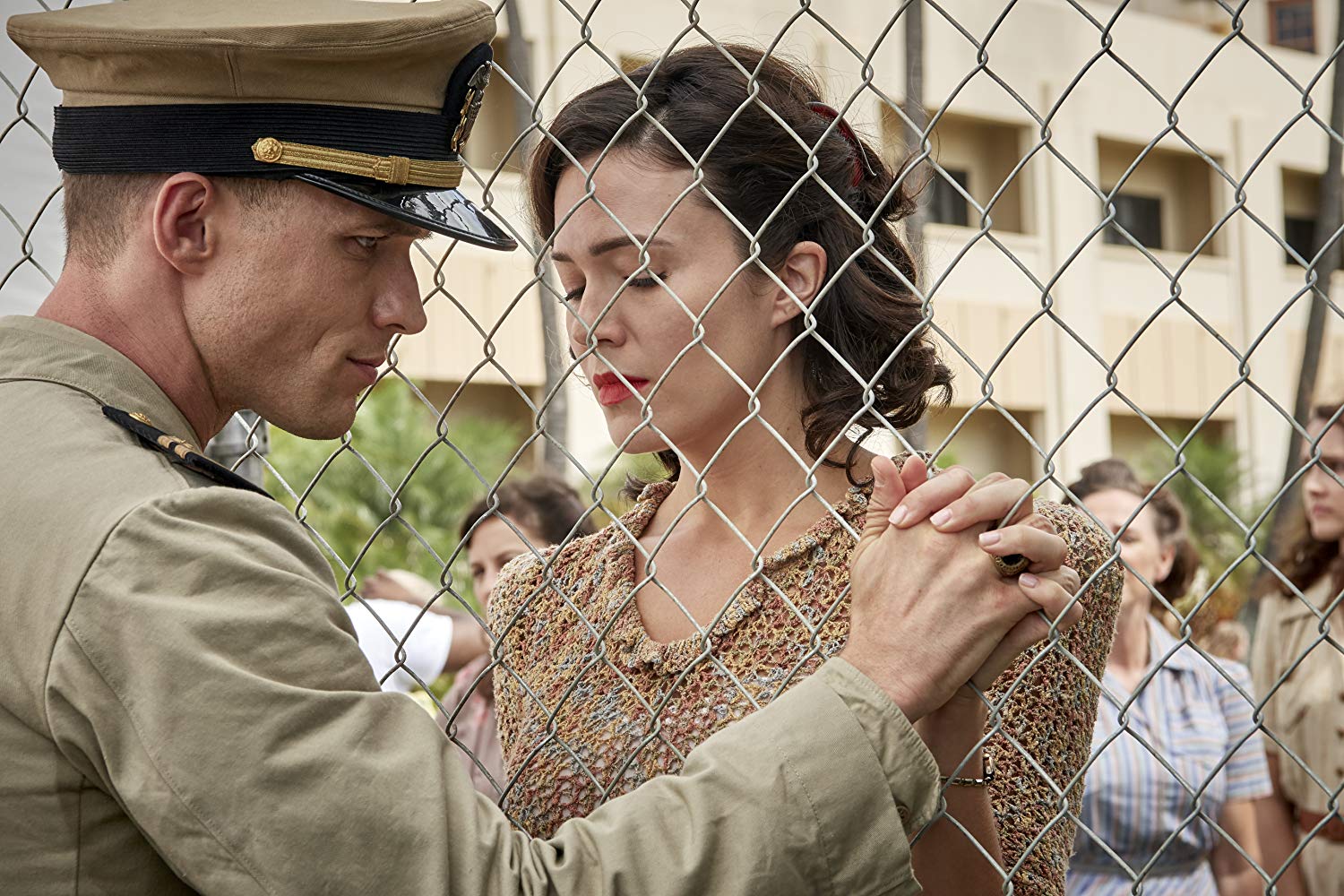
by Michael Foust | Nov 8, 2019
The movie ‘Midway’ (PG-13) opens in theaters this weekend, telling the true story of a pivotal World War II battle that took place merely six months after Pearl Harbor.
Dick Best is a cocky Navy bomber pilot from New Jersey who
has never met a challenge in the air he didn’t face with bravado.
As one of his superiors says, Best “doesn’t care” that he
might die during training or battle—nor
that his recklessness might jeopardize others.
But Dick Best’s gusto just might come in handy if the United
States is to win the Pacific against Japan.
The year is 1942, and the American military is still
recovering from Japan’s attack on Pearl Harbor that killed more than 2,400 and
destroyed 18 ships.
The U.S. is planning a major counterattack, and Best and his
squadron could play a key role. The goal: lure the Japanese Navy to an area 1,000
miles northwest of Hawaii—known as the Midway Atoll—for an ambush.
There, the U.S. can deliver a crippling blow to Japan’s
heretofore superiority in the Pacific and, hopefully, turn the tide. Otherwise,
the Japanese will win and use Midway Atoll as a base to eye North America.
“If we lose, then they own the Pacific,” Best tells his
wife. “Then they raid the whole West Coast.”
The movie Midway
(PG-13) opens in theaters this weekend, telling the true story of a pivotal
World War II battle that took place merely six months after Pearl Harbor and
virtually assured Japan would not advance to California.
The Japanese lost four carriers to America’s one at Midway
and twice as many aircraft, too—and operated from a defensive position the
remainder of the war.
Midway stars Ed Skrein (Alita: Battle Angel) as Best, Woody Harrelson
(The Hunger Games series) as Chester
W. Nimitz, and Dennis Quaid (I Can Only
Imagine) as William ‘Bull’ Halsey.
Despite the name, the movie’s plot involves more than just
the famous battle. The film opens in 1937 and then jumps ahead to the morning of
Dec. 7, 1941, the day Pearl Harbor was attacked. We then follow Best and his
friends as they mourn their friends’ deaths and prepare for a series of
counterattacks—including another important battle, Coral Sea—leading up to
Midway.
Thanks to spectacular special effects and characters based
on real people, Midway is
ultra-realistic. By the time the credits roll, you just might want to stand up
and cheer for the men and women who were dubbed the “Greatest Generation”—the
generation that won a war on multiple continents thanks to courage, hard work
and self-sacrifice.
Still, Midway is
far from being a family-friendly flick, and is marred with excessive language that
might cause many moviegoers to stay away.
Warning:
minor/moderate spoilers!
(Scale key:
none, minimal, moderate, extreme)
Violence/Disturbing
Moderate/extreme. Midway has multiple battle scenes—of ships
sinking, planes exploding and men dying—but it lacks the blood and gore found
in many other war movies. Even so, it might trouble those who have served in
the military. We see lifeless bodies—a few of them charred—after the attack on
Pearl Harbor. We see a room full of body parts that are covered with blankets.
A Japanese pilot performs a kamikaze mission as his plane was hit. Japanese
planes fire at a field of farmers. The film likely has dozens, if not a few
hundred, explosions.
Sexuality/Sensuality/Nudity
Minimal. A man makes a joke about “chasing tail.” Men and
women dance at a club. We see one or two pinups (in the background) of scantily
dressed women.
Coarse
Language
Extreme. H-ll (24), d–n (10), GD (7), b—-rd (6), a– (6),
s–t (6), SOB (4), misuse of “Christ” (2), misuse of “Jesus” (2), f-word (1).
We also hear two or three ethnic slurs about Japanese people.
Other
Positive Elements
Dick Best is married and has a young daughter. Despite his
bravado, he is a loving father and husband who cares for his family. (One scene
shows him kissing her goodnight.)
An intelligence officer references his workload when he says
of his wife, “When the war is over, I plan on spending the rest of my life
making it up to her.”
Other Stuff
You Might Want To Know
Smoking is prominent. We see men and women drinking alcohol.
A man says, “I don’t believe in God.” (Although, later in the film, we hear
someone say, “God bless those boys.”) Midway, unfortunately, includes few
faith-centric elements.
Life Lessons
Family is
essential: Best,
despite his brashness, misses his wife and daughter. At one point, he tells a
friend he wants to survive the war so he can watch her grow up.
War isn’t
glamorous: Too
often, we romanticize war. But as Midway
shows, war should be avoided at all costs. People die. Children grow up without
a parent—and husbands and wives without a spouse.
Courage is a
virtue:
Wars couldn’t be won without soldiers who are willing to die. At the Battle of
Midway, there were thousands of brave men who were ready to put their lives on
the line.
Worldview/Application
War is horrible. Before the Fall, it didn’t exist.
Sometimes, though, war is necessary. Indeed, World War II is
often seen as the best modern example of a just war. Hitler killed 6 million
Jews. The Japanese killed between 15 and 20 million Chinese civilians. How far
would these two regimes have gone if they weren’t stopped?
In the middle of this, the U.S. was attacked.
Tom Brokaw called this group of men and women the “Greatest
Generation.” They defended freedom. They fought the embodiment of evil.
And they did it with traits grounded in Scripture: courage,
self-sacrifice, selflessness and perseverance.
Midway largely avoids the topic of faith.
But it rightly characterizes these men and women as regular people who put
their lives on the line to save a world in peril.
What Works
The story. The special effects.
What Doesn’t
The film has too much language—and not enough faith.
Discussion
Questions
1. What made the Greatest Generation so great?
2. Is war ever necessary? Explain your answer.
3. What are the limits to a just war?
4. How would the world be different today if the U.S. had
remained neutral?
5. List five positive character traits of the Americans in Midway.
Entertainment rating: 3.5 out of 5
stars. Family-friendly rating: 2 out
of 5 stars.
Rated PG-13 for sequences of war violence and related images, language and smoking.
Photo credit: Lionsgate




